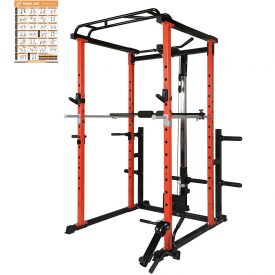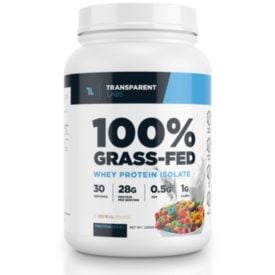How many reps should you do to build muscle mass?
If you want to start an argument between fitness experts, talk about the “perfect” rep range, you’ll get anywhere from one repetition to a hundred of them. There’s no question that everyone has their own idea in mind when they talk about the “right” amount of reps you should be doing. Well, our team at Generation Iron is going to open up that argument once again… and we’ll also finish it.
Why this debate even still exists is that clearly weightlifting and fitness as a whole are subjective. Sure, there are ways to prove scientifically that something builds more muscle, or enhances cardio, or helps with fat loss. But at the end of the day, if you don’t like an exercise or another aspect of the lift, then you won’t do it. And that’s okay because there are plenty of other ways to build muscle and get the most out of your muscles. Repetitions and the volume you put into your workouts are just simple ways to get this done without having to completely tweak your routine.
Let’s dive right into this and see what rep ranges are all about. We’ll talk all things reps and make sure you know which rep range will give you the best boost for muscle mass. Whether it be low reps, medium reps, or high reps, all will give you great gains as you seek to boost muscle.
What is a Repetition in Weightlifting?
Well, hopefully you already know what this is, but just to clarify, a repetition is the amount of times you lift a weight in each set. For example, let’s say you are doing squats, you can do 12 repetitions in one set. This means you are squatting the barbell and whatever weight you have on it, 12 times before taking a break. There are different ranges to do different things, so let’s take a look at everything.
RitFit Power Cage is a heavy-duty and stable rack with 12 variable positions to allow for many big lifts.
Why Rep Ranges Matter?
The range of repetitions are important because they are the foundation of your workout. Reps, along with working sets, give you the platform to know how much to lift for any given workout. They work to determine the load and amount of time under tension you experience during each respective workout (1). With the right rep range and the ability to know just how to target your muscles, you can be better prepared for absolutely anything that comes your way.
Let’s Talk Rep Ranges
To get the most out of your training, knowing the proper range of reps to perform is important. The lower the rep, the higher the weight you are most likely lifting so being able to decipher just what works for you can be an absolute game changer for all your lifting goals. Whether they be low, medium, or high reps, you will find success with at least one, if not all, of these rep ranges (2).
Low Rep Ranges (1-5)
This rep range is primarily for strength. While it will definitely add mass to your frame as well as cutting fat, there’s one missing piece to this puzzle – time under tension (TUT). It has repeatedly been shown that TUT is necessary for optimal muscle fiber growth. With a less than 30-60 second rep range, you might find yourself coming up short on muscle gains.
In short: Great for strength and building mass, but you lose a fair amount of time under tension.
Medium Rep Range (6-15)
Not too soft and not too tight. This is an old eastern philosophy adage that could pay dividends on your muscle gains. The medium rep range proves to win all across the board, being associated with fat loss and the most muscle mass. This range combines time under tension with the 75% of one rep weight needed to stimulate muscle fibers. This rep range also shreds fat without losing muscle.
In short: Right in the sweet spot for muscle growth and is most associated with seeing the most amount of muscle mass.
Transparent Labs 100% Grass-Fed Whey Protein Isolate is organic, non-GMO, and gluten-free, boasting a great formula for a top protein powder. With nothing artificial added, this is a clean protein that is easier on your stomach.
High Rep Ranges (15+)
A high rep range is best for endurance. Commonly associated with fat loss and toning, more and more evidence is starting to show that builders can lose just as much fat with medium to high reps depending on the intensity of the exercise. This range is best for skill specific exercises. For example if you’re working on your baseball swing, or practicing your throwing arm. This not optimal for muscle building, however.
In short: Better for endurance and toning and works well with skill specific movements.
How To Mix Working Sets In With Reps
For working sets, this is how you choose to program your workout. If you were to do a higher rep range then you may only do 3 working sets. For those in the lower rep range, you might be looking at 5-6 sets. It is really about what will give you the most time under tension while still accomplishing your intended goals.
Example Workout With Sets & Reps
| Rep Range | Sets | Reps |
| Low | 5-6 | 3 |
| Medium | 3 | 10-12 |
| High | 2-3 | 20 |
Which Rep Range Builds The Best Muscle?
It seems as though the medium rep range is the sweet spot of reps. Able to give you the right amount of time under tension while not taking up so much time in your workout allows for great strength gains, increased muscle, and more effective workouts overall. By working for muscle building and fat loss, you get the best of both worlds with this rep range.
It should be said, however, that all of these rep ranges can work wonders for your gains. For those looking to increase mass alone, look to some low reps with the right exercises. Or if you prefer to boost endurance and work for cardio based results, mix in some higher rep ranges. Working out is subjective and your rep ranges should reflect that.
Wrap Up
Rep ranges and how to properly place them in your routine is important and by knowing how each rep range works, you can better schedule them into your training plan. With the right approach to only the best gains, it looks like medium rep ranges are the go-to range for those looking for all-around results. But don’t neglect the other two because each has its own respective benefits. Experiment with these rep ranges and see what works best for you to maximize all results.
Let us know what you think in the comments below. Also, be sure to follow Generation Iron on Facebook, Twitter, and Instagram.
*Images courtesy of Envato
References
- Mangine, G.; et al. (2015). “The effect of training volume and intensity on improvements in muscular strength and size in resistance-trained men”. (source)
- Campos, G.; et al. (2002). “Muscular adaptations in response to three different resistance-training regimens: specificity of repetition maximum training zones”. (source)












